The economic fallout caused by COVID-19 has seen businesses undergo rapid digital transformation in recent years. The sudden transition to remote work for millions of workers and forced changes to customer interactions saw organizations navigate the economic upheaval of COVID-19 by realigning business models.
At first, leaders were largely concerned with procuring new technologies to meet the evolving needs of remote employees and customers. However, they soon realized that digital transformation was about more than just procuring technology; it was also about ensuring successful change management through agile digital adoption.
For example, the increased adoption of cloud services can be considered a game-changing technology that facilitates scalability and flexibility. By leveraging the capabilities of managed services and application hosting in the cloud, core operational processes could be outsourced to dedicated vendors.
With the cloud, organizations aren’t required to own or manage their infrastructure. This means they can opt out of hiring in-house IT teams and save time otherwise wasted on lengthy legacy software training sessions—delegating responsibility and increasing employee productivity.
The widespread adoption of cloud technology by organizations may be an impressive demonstration of business agility, however, the playing field is shifting yet again. This time, the focus is on becoming a digitally mature enterprise. Organizations worldwide are looking for companies that they consider to be digitally mature so that they can learn from them and hopefully benefit from their journey.
The problem is that no companies can be considered digitally mature. They don’t exist yet. Some companies might be close to being digitalized, but no company has yet completed the process.
In this article, we’ll highlight five quality markers of a digitally mature organization so that companies are better able to recognize agile digital transformation in action, take notes and act accordingly.
- What Makes An Organization Digitally Mature?
- What Distinguishes Organizations That Are Digitally Maturing?
- An Example of A Digitally Mature Organization
- The Five Key Markers Of A Digitally Mature Business
- Characteristics of a Digitally Maturing Enterprise
- What’s Next for Digitally Maturing Organizations?
- Strategy Drives Digital Maturity, Not Technology
What Makes An Organization Digitally Mature?
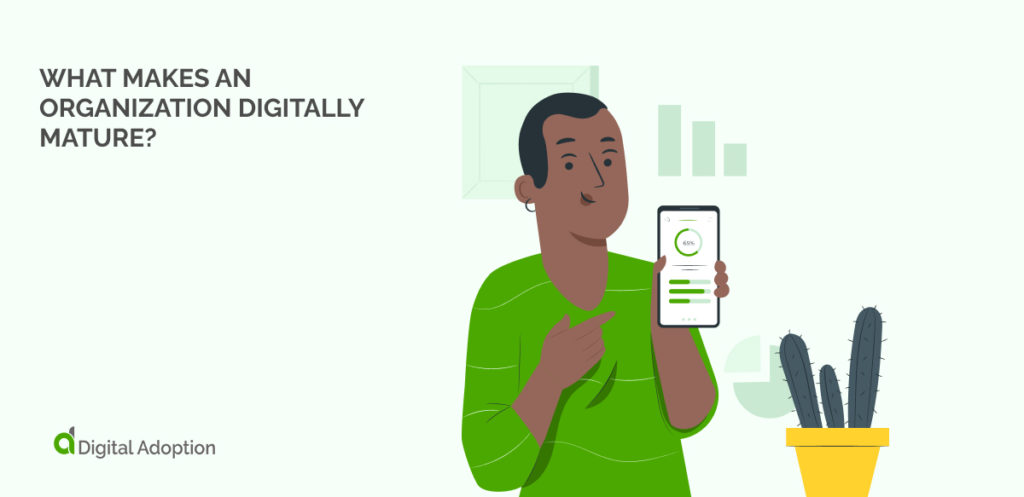
Digitally mature organizations initiate systematic changes involving workforce management, reshuffling, and culture reflections around digital experiences and customers. They then frequently innovate on a small scale to aim for successes that have a noticeable impact on the business—which can then be conveniently scaled enterprise-wide if these efforts succeed.
These companies prioritize leadership development and see technology as the key to success. They’re always learning, improving and rarely satisfied with the status quo—so they naturally attract top talent. They also focus on satisfying customer needs and improving their overall experience.
These trend-setting companies think about making things more convenient and user-friendly for their organisation and are always strategizing ways to improve business practices. Organizations that embrace risk, change and innovation, and display a willingness to experiment with new ideas are undoubtedly in a better position to achieve digital maturity.

In a Gartner survey, 89% of board directors say digital is embedded in all business growth strategies. However, only 35% of board directors say that they have achieved or are on track to achieving digital transformation goals.
The 3 Levels of Digital Technology in Digitally Mature Organizations
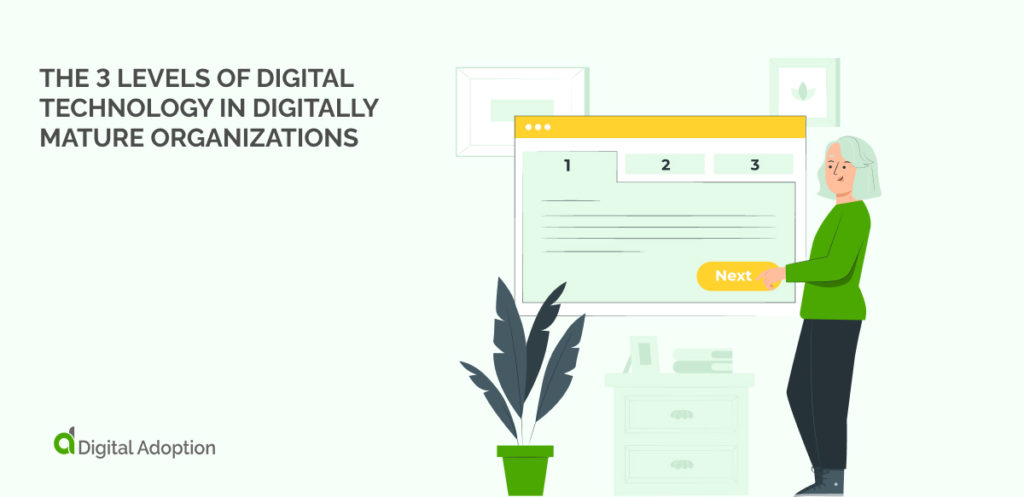
Business and IT leaders aim to become digitally mature because they understand the value of digital in driving business transformation. However, an intent to grow can only occur when communication is clear, accurate and unambiguous. This involves dissecting the different digital communication terminologies and establishing a baseline for what each one means. Taking a closer look, we find that digital technology has three different functions.
Digitization
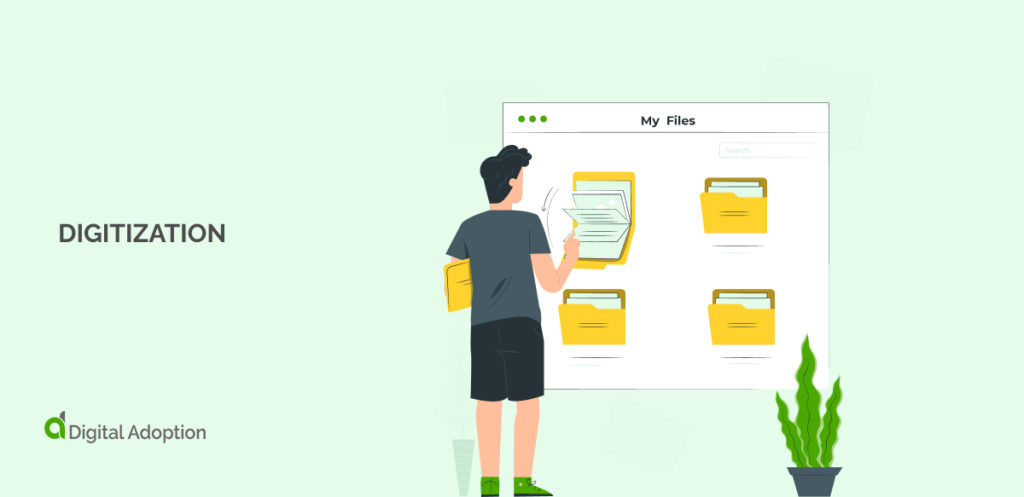
Digitization simply refers to the process of converting physical information and objects into digital formats, and often entails transforming from an analog system to a digital one. As organizations grow and operations complexify, they need to understand the value in digitizing their data and bringing it online. This data can then be purposed to improve efficiency, enable better decision-making, and provide a competitive edge by helping businesses enhance operational processes.
Digitalization

The second key is digitalization. Unlike digitization (which only converts existing business models into digital ones) digitalization uses digital technology and data to improve the customer experience and generate new revenue streams. This enhanced customer experience will be richer, more nuanced, and more relevant to each customer’s needs.
This happens mainly because of the company’s cloud-based services, which make it possible for the customer to have a comparable experience regardless of location or device.
Digital Transformation

Finally, we have digital transformation. This term refers to how leaders use technology to gain an advantage over competitors and change the organizational business model and culture better to meet the demands of a constantly evolving marketplace.
An example of this would be a company that starts using data analytics to improve its marketing campaigns and then begins to sell its customer data to other businesses. This changes the company’s business model from one product of sale to another selling data.
It’s important to note that these three terms are not mutually exclusive; they’re pretty interrelated. A company that’s good at Digitization will likely be good at Digitalization, and a company that’s good at Digitalization will likely be good at digital transformation. The most successful companies are those that excel at all three.
All this means is that to be digitally mature, an organization must clearly understand how technology can be used to improve its business. They must also plan how to use technology to gain a competitive advantage over less digitally mature peers. And they must be willing to invest the necessary resources to make it happen.
What Distinguishes Organizations That Are Digitally Maturing?
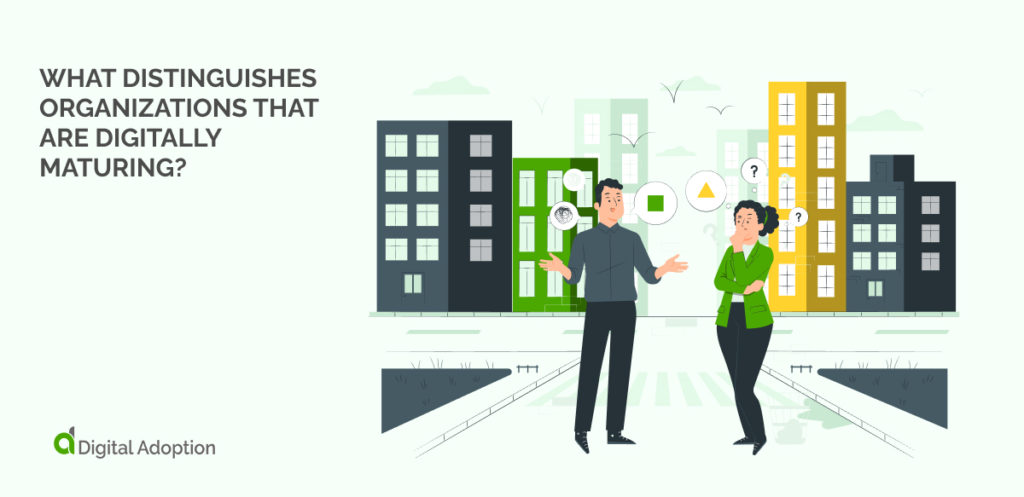
What separates organizations that are digitizing from those that aren’t?
At Proof, they put their customers’ business outcomes above all else. They ‘reverse-engineer the future of the business,’ always striving to push boundaries and bring innovative solutions to the market. They engage in skunk works activities to achieve these ambitious goals – testing bold new ideas with potentially big payoffs.
To sum it up, digitally maturing organizations know how to use technology and data without sacrificing essential business practices. In other words, they have figured out how to get the most impactful results from all three areas. So the question for you is: where does your organization fall on this continuum? And what are a few things you could change to move in the right direction?
An Example of A Digitally Mature Organization
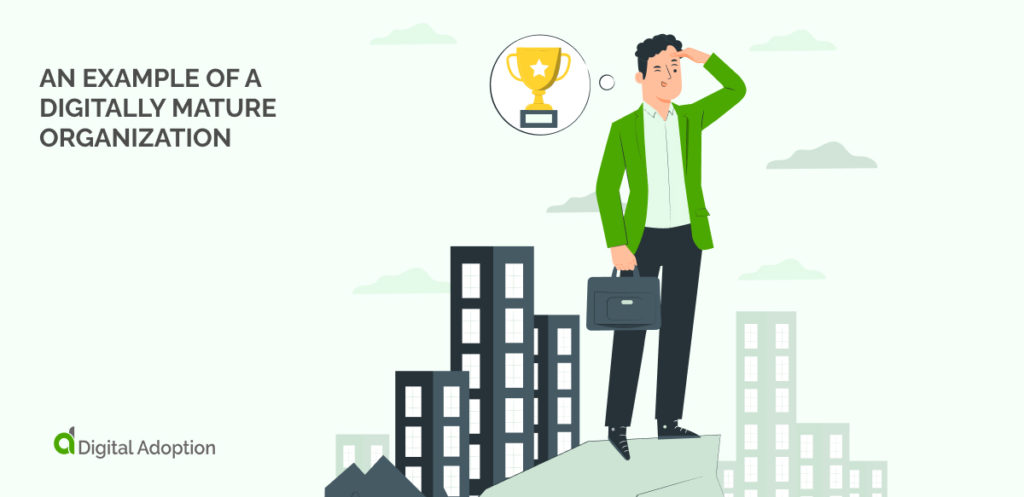
A great example of a digitally maturing organization is Amazon. Amazon has been on the cutting edge of technological innovation for years. They were one of the first companies to capitalize on the power of data and use it to improve its business. And more recently, they’ve invested heavily in artificial intelligence and machine learning.
This has allowed them to create an unrivaled customer experience in the marketplace. They have also been able to use technology to completely transform their business model. For example, it started as an online bookstore but is now one of the world’s largest providers of cloud computing services.
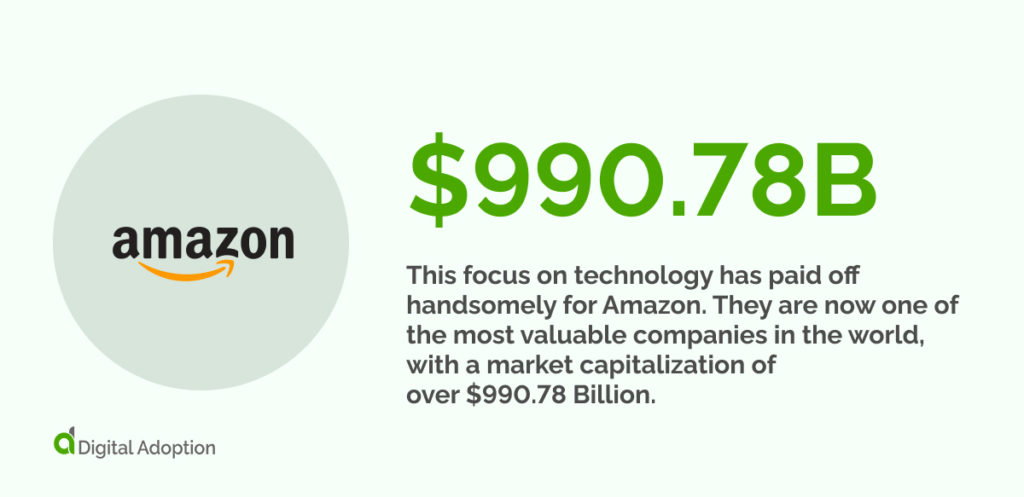
This focus on technology has paid off handsomely for Amazon. They are now one of the most valuable companies in the world, with a market capitalization of over $990.78 Billion.
So what can we learn from Amazon’s example? First, that technology can be used to create a competitive advantage. Second, it’s essential to invest in the latest and greatest technologies. And finally, that digital transformation can lead to fantastic business results.
The Five Key Markers Of A Digitally Mature Business
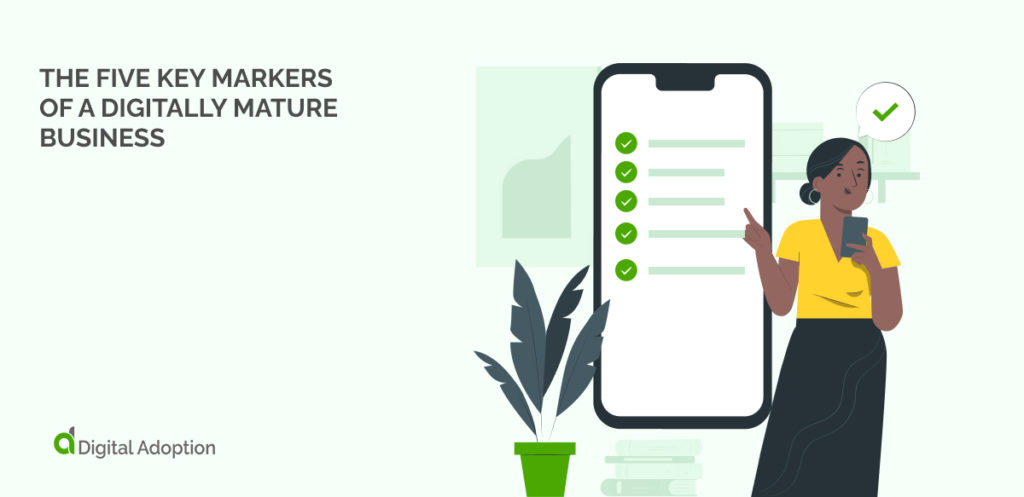
A study of global digital business by Deloitte and the MIT Sloan Management Review showed that there are five critical practices that organizations that have achieved digital maturity use. All companies can follow these guidelines to improve their businesses.
- Systemically changing how they organize and develop workforces to spur workplace innovation and cultivate digitally minded cultures and experiences.
For example, as companies become more digitally mature, they typically report being increasingly organized around cross-functional teams. Since work is done differently in this setup, it significantly affects organizational behavior, corporate culture, talent recruitment, and leadership tactics. - Planning for the future.
More digitally mature companies tend to have longer strategic planning horizons, whereas less digitally mature companies only look out for a year or two. The digital strategies of the former focus not just on technological advancement but also developing essential business skills. Connecting a company’s digital strategy to its core values and priorities enables it to adapt quickly to changes in the digital landscape. - Increasing the size of digital curiosity so that it benefits the company as a whole.
Companies that are more digitally developed are likelier to experiment with small innovations, but these experiments have a larger chance of becoming big successes. Organizations in the early stages of digital development are less than half as likely to create small and large-scale initiatives compared to their mature counterparts. Mature companies tend to be smarter about how they finance these projects, so they stay caught up amidst competing investments. - Becoming a talent magnet.
Because digital skills are in such high demand, if employees feel they need opportunities to develop them, they will most likely look for a job at a different company. Development efforts that go beyond traditional training are something companies that want to attract and keep good digital talent typically understand. Creating an appealing environment that offers career growth and the opportunity to acquire digital skills and experience is key to ensuring employees stay happy at their jobs. - Finding leaders who have the foresight to digital transformation and are willing to invest in it.
Leaders more likely to succeed have a clear idea of where they want their business to go and see digital improvements as key steps in achieving that goal.
Characteristics of a Digitally Maturing Enterprise
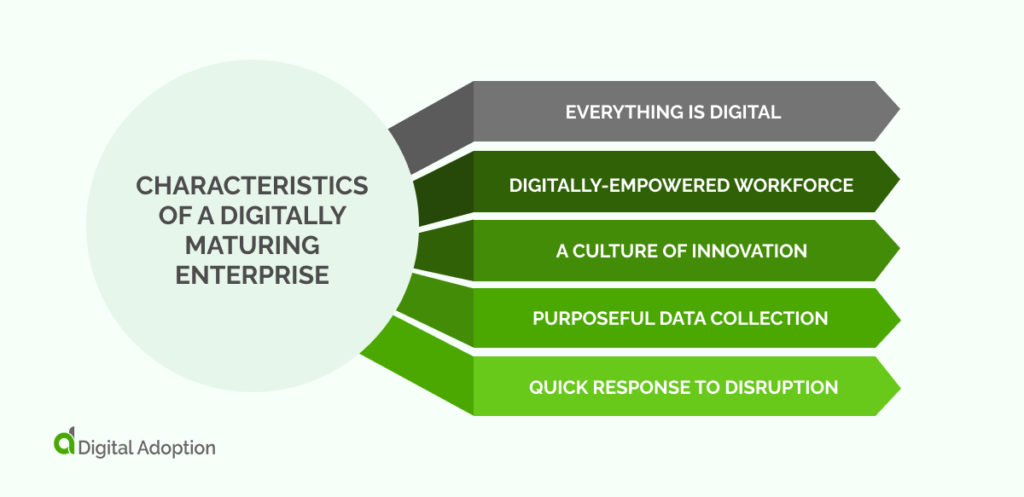
You must focus on achieving digital maturity to maintain success after a digital transformation. According to Deloitte research, digitally mature organizations tend to have higher net profit margins and revenue when compared with the industry average. In other words, there are plenty of benefits associated with CIOs taking a digital-first approach.
Although social media, websites, email, and video conferencing are all digital solutions that require IT infrastructure and software, using them does not make a business digitally mature. Many companies think they must be advanced in digital practices because they use one or more of these solutions. This is often not the case.
If you want to know whether your company is headed in the right direction digitally, look out for these tell-tale signs of digital maturity. Companies can achieve digital maturity by adopting and implementing specific technologies to improve business and financial performance.
Everything is Digital
If you want your organization to succeed, it’s time to digitize. Gartner analysts predict that enterprise software spending will rise 6.2% in 2020 as the demand for digital transformation grows stronger. Take the first step towards digital maturity and set yourself apart from the competition.
Digitally-empowered Workforce
Organizations that are considered digitally mature have a fundamental shift in their workforce composition. For example, digital leaders are responsible for overseeing strategic changes that are based on digital technologies. Furthermore, digital mentors serve as guides during digital disruption, and technology-competent employees help enhance workplace productivity.
A Culture of Innovation
Your organization should prioritize thought leadership, innovation, and functional collaboration to succeed in digital maturity. You can achieve this by investing in experimentation with an inclusive mindset. Additionally, it would be beneficial to encourage employees to engage in digital experiments that would lead to better performance outcomes.
Purposeful Data Collection
Unlike other enterprises, the digitally mature enterprise is strategic about data collection. Their goal to make decisions based on data pushes them to start collecting that data sooner so they have more relevant and insightful information when needed. This doesn’t mean they collect all possible forms of data, but rather lots of valuable pieces of evidence.
Quick Response to Disruption
Organizations that have reached digital maturity can respond to disruptive changes in a well-organized way. The digital technology supporting the organization acts as a shield, helping them react and adapt to changes quickly, cohesively, dynamically, and sustainably. Despite being digitally mature, there’s always room for improvement.
With an ever-growing number of companies achieving success, it’s becoming increasingly important to set your organization apart with continuous innovation. You’ll need the right team in place and effective technological systems and products that fit your business model to do this effectively.
What’s Next for Digitally Maturing Organizations?
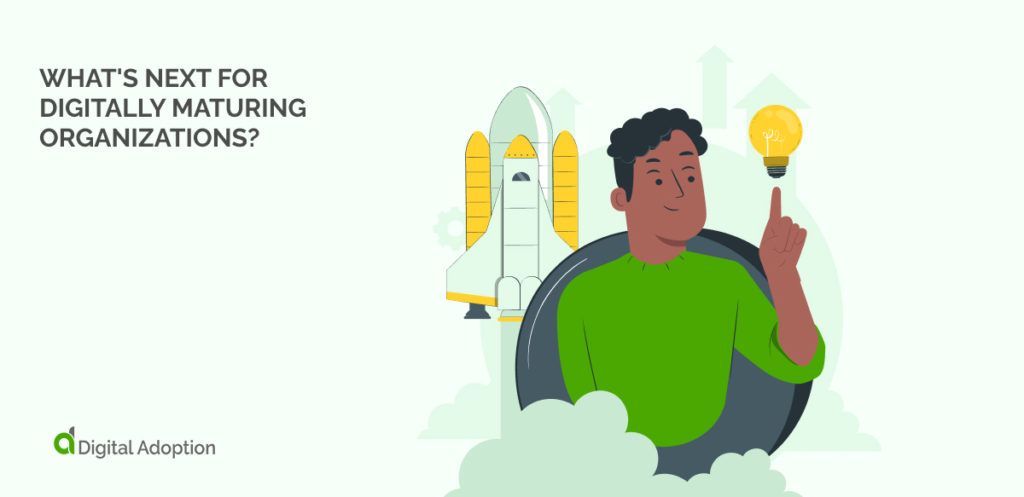
The next step for digitally maturing organizations is to move beyond just using technology for its own sake. They need to start using it to drive real business value. This means taking advantage of data to improve decision-making, automating processes to improve efficiency, and using artificial intelligence and machine learning to gain insights that would otherwise be unavailable.
To do this, organizations must invest in the right tools and platforms. They will also need to put the necessary processes and structures in place. But most importantly, they will need to change their mindset and view technology as a strategic asset – not just a cost of doing business.
The good news is that there are already many examples of organizations doing this. So if you’re looking for inspiration, look no further than the companies leading the way in digital maturity.
Strategy Drives Digital Maturity, Not Technology
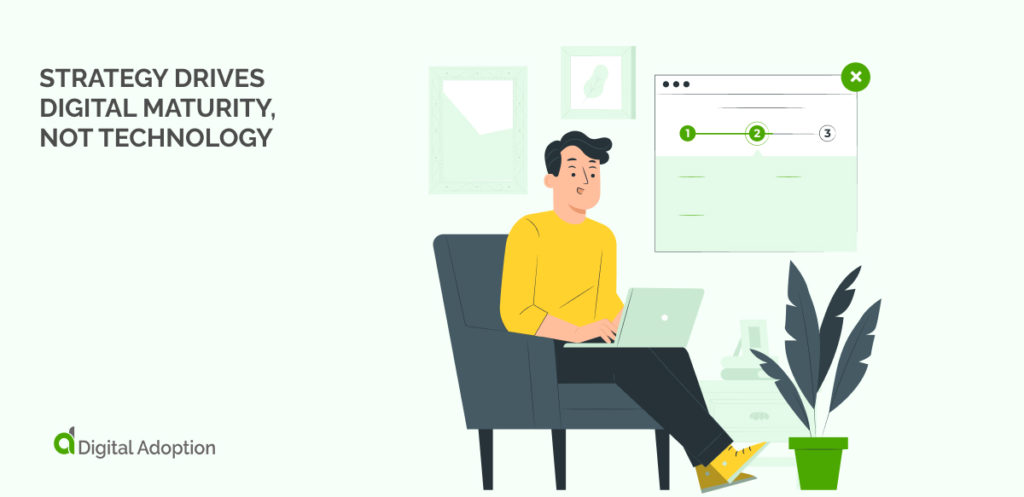
If you want your company to succeed in the digital age, you need a clear and concise digital strategy. Only 15% of those from companies at the beginning stages of digital maturity (where digitization has rewritten processes, how employees are engaged, and business models) have said that their organization possesses a defined digital strategy. However, more than 80% of respondents from organizations further along in digital maturity say that theirs has such a plan.
The success of a digital transformation strategy is based on its potential and goals. Less digitized companies typically concentrate on singular technologies and have strategies with an operational focus. The digital strategy for the most progressive organizations is designed with the company’s Transformation in mind.
Companies that are growing digital organizations focus on skills to help them achieve their strategy. Organizations further along in digital maturity are four times more likely than others less mature to provide employees with the necessary skills. In agreement with our other findings, many companies at the beginning stages of digital maturity lack conceptualization skills regarding how digital technologies can affect business.
Employees are looking for companies that excel in digital capabilities. From those aged 22 to 60, most respondents said they would rather work for an organization’s digitized operations. Businesses must stay competitive and continuously improve their digital offerings to satisfy existing employees and attract new talent.
Those who have developed more maturity in digitization are more willing to take risks than those who haven’t progressed as much technologically. Business leaders must accept failure before achieving success to make their organizations less risk-averse. They must realize that employees may be hesitant to take chances as their managers and will require assistance to become braver.
Digital transformation is centrally led in most successful organizations. A recent study showed that twice as many digitally mature companies have a designated leader compared to less mature entities. Digital fluency isn’t just about being tech-savvy; it’s communicating the value of technology convincingly to employees and potential customers.









